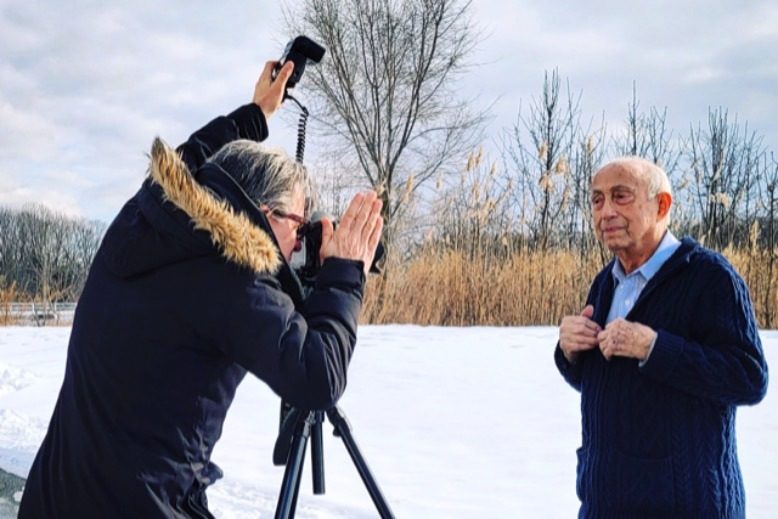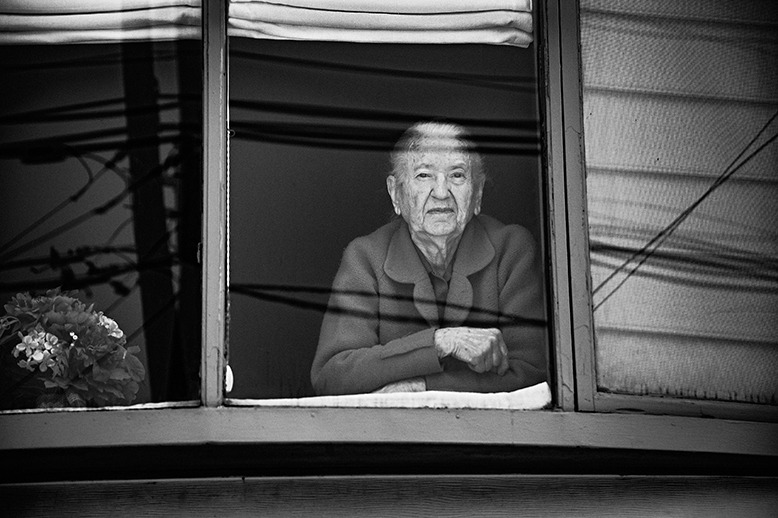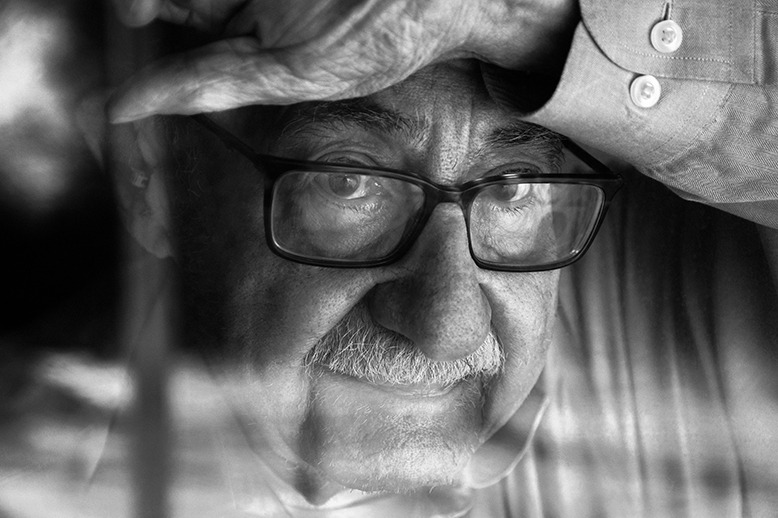
Photographer Jim Herrington has spent years capturing portraits of icons—from the Rolling Stones to Dolly Parton to Cormac McCarthy—but he’s long had an affinity for committing the faces of lesser-known names to film.
After a “hobo kind of existence over the last decade”—traveling the world with his Leica M6 camera and “collecting stories like butterflies”—Herrington settled in Nashville right before the pandemic hit. This winter he traveled to New Jersey to photograph seven Holocaust survivors, all of whom live here, for a feature story in New Jersey Monthly’s April issue.
We recently spoke with Herrington by phone about his process.
You had to shoot most of the Holocaust survivors behind windows due to the pandemic.
They were all to be shot behind glass. However, one guy said, “To hell with that. I could die tomorrow, just from age. I’m coming outside.”
Do you have a specific process for how you interact with your subjects?
I guess part of my thing—I don’t really like to think about or analyze it too much, because I’m afraid I’ll mess it up—but a lot of [photography] is how you get along with people, and how you talk to and interact with them. I don’t know what I do in that department, but I’m interested in people. I don’t think it’s any amazing recipe that I have: I guess I showed interest in them, and I enjoyed talking to them, and I was genuinely curious about them. I like talking to people as much as I like photographing them, so I guess maybe I make them feel at ease.
When photographing these subjects, were you making small talk? Were you speaking about their experiences in the Holocaust? A bit of both?
I don’t really like small talk—but at the same time, you can’t have someone’s face moving when you’re photographing, so it’s kind of like an exaggerated conversation. It’s weird to think about, but you’re kind of tossing in these one-liners and watching how they feel.
Some people are terrified of the camera—terrified, like they’re hornets. I’ve seen people just freeze up. So it’s a matter of making people feel comfortable. You want to distract them from the fact that you’re analyzing their face with this big lens. It’s genuine conversation and curiosity, but also these kind of sleight-of-hand tricks that I guess I subconsciously do to get people to be a certain way in front of the lens.
Back to shooting these subjects behind glass—how do you feel toward that kind of limitation in your work? Does it challenge you? Invigorate you?
I like the challenges. It’s weird; I don’t like having a bunch of choices. Just like going to a Greek diner—I hate a 20-page menu—I don’t like a bunch of cameras and lenses. And actually, I liked the glass thing, especially with Ryfka. I love that one because you get all these reflections. And suddenly, when you have a barrier, it makes you think about people behind barriers: What are barriers? How do people feel behind barriers? It’s a good metaphor.

Ryfka Finkelstein, 92, spent the war alone in her native Poland, running and hiding, with help from kind non-Jews. Photo by Jim Herrington
When you go into a shoot like this with the knowledge that your subjects have endured immense trauma, does your approach to capturing them differ at all? Do you feel any specific obligation to them?
I come from a small Southern town, and I guess people were very polite or something, but things like death or mental illness, illness of any kind—all these kind of taboo things—you always had to talk about them in hushed terms, especially if you were talking to somebody that had some horrible thing happen. I’ve kind of learned through the years that what people most want to do is talk about stuff. So whether it’s someone in a wheelchair or someone who’s been through the Holocaust, I think, again, if you’re generally genuinely—and hopefully somewhat intelligently—curious about their story, whatever it is, people are usually glad to talk about it. I think you can make people nervous by pussyfooting around things—and if you’re not rude or crass, but genuinely curious and talkative, people love that.

Charles Middleberg, 92, recalls “dreadful memories” of his family’s fate. Photo by Jim Herrington
In an interview about your work photographing trailblazing mountain climbers, you spoke about tracking down and capturing subjects who were “disappearing,” and how you felt a “certain responsibility” to “get the last remaining people” from a certain era. Was that mindset present at all during this photoshoot?
Absolutely, because these people are the last. They’re of the age group that was really the youngest at these [concentration] camps, or just around [during the Holocaust]. …They were kids during that time, and that’s kind of crazy.
I’ve got this thing about old stories, old people. I shoot a lot of music and celebrity stuff, but I’ve always been drawn to these kind of forgotten older people. Because a lot of times nobody is shooting them—everybody’s gravitating to the young, hip, hot thing. There’s no shortage of people shooting those people. But, God—the things that are rare, disappearing? That’s amazing. Why would you not shoot those people?
